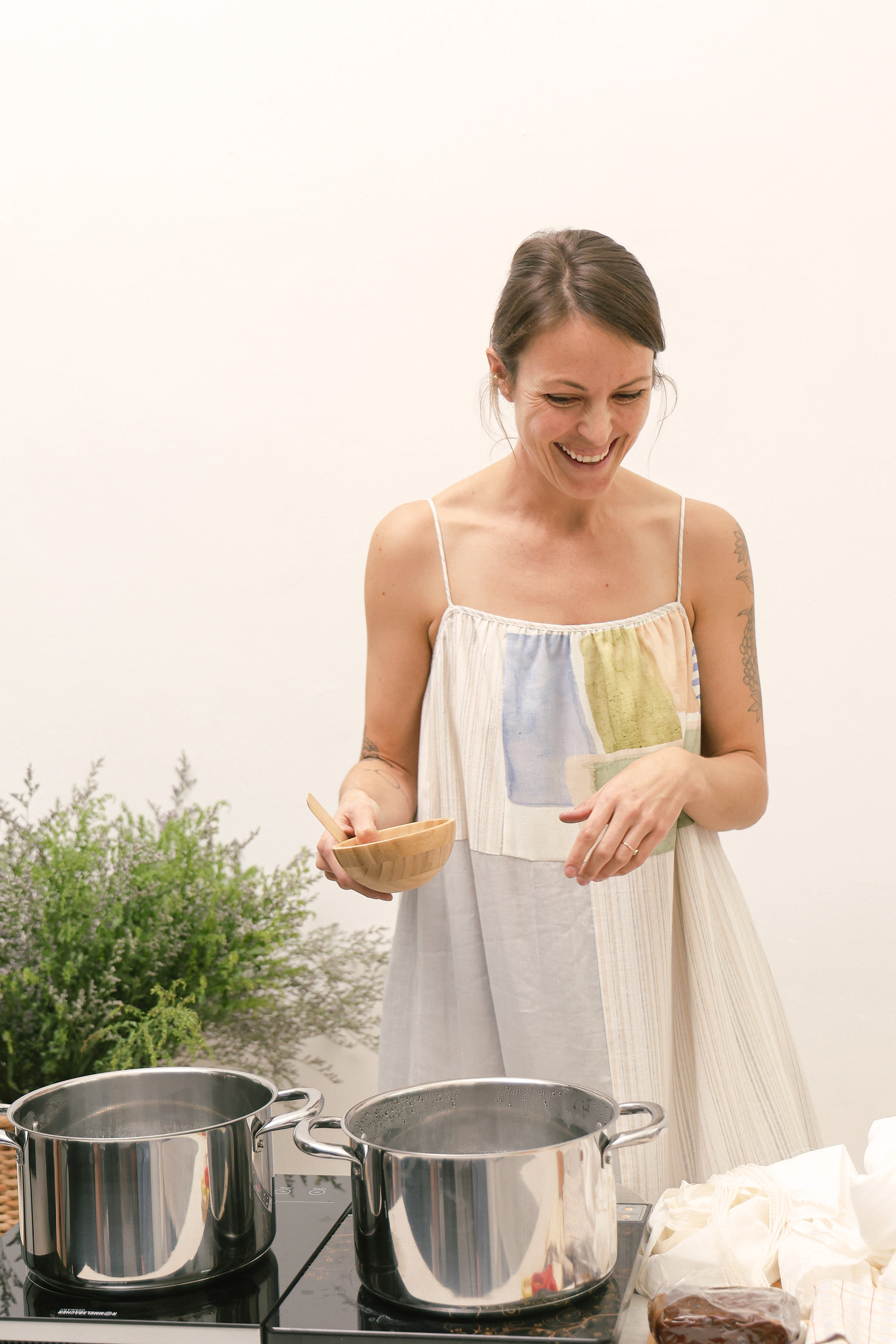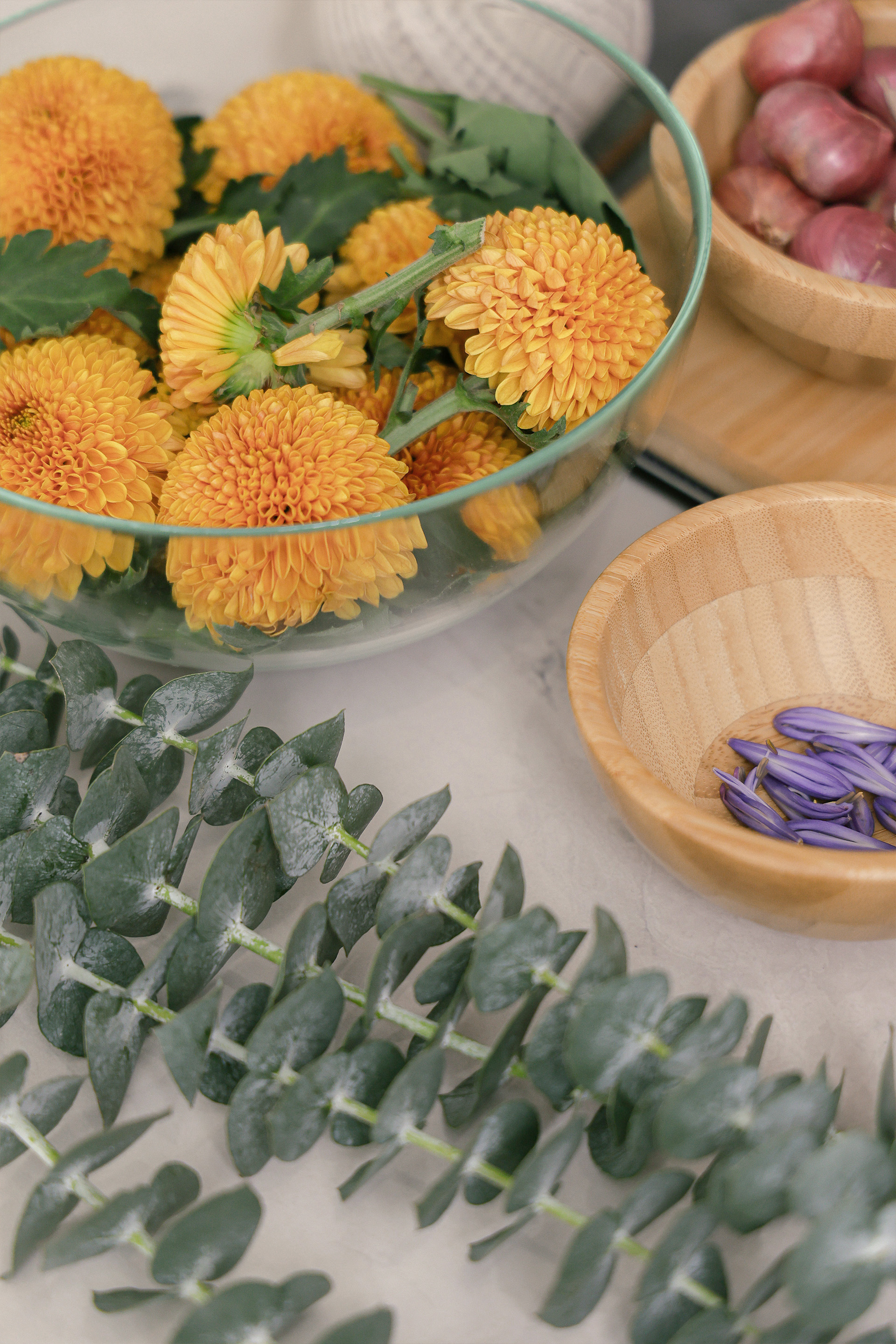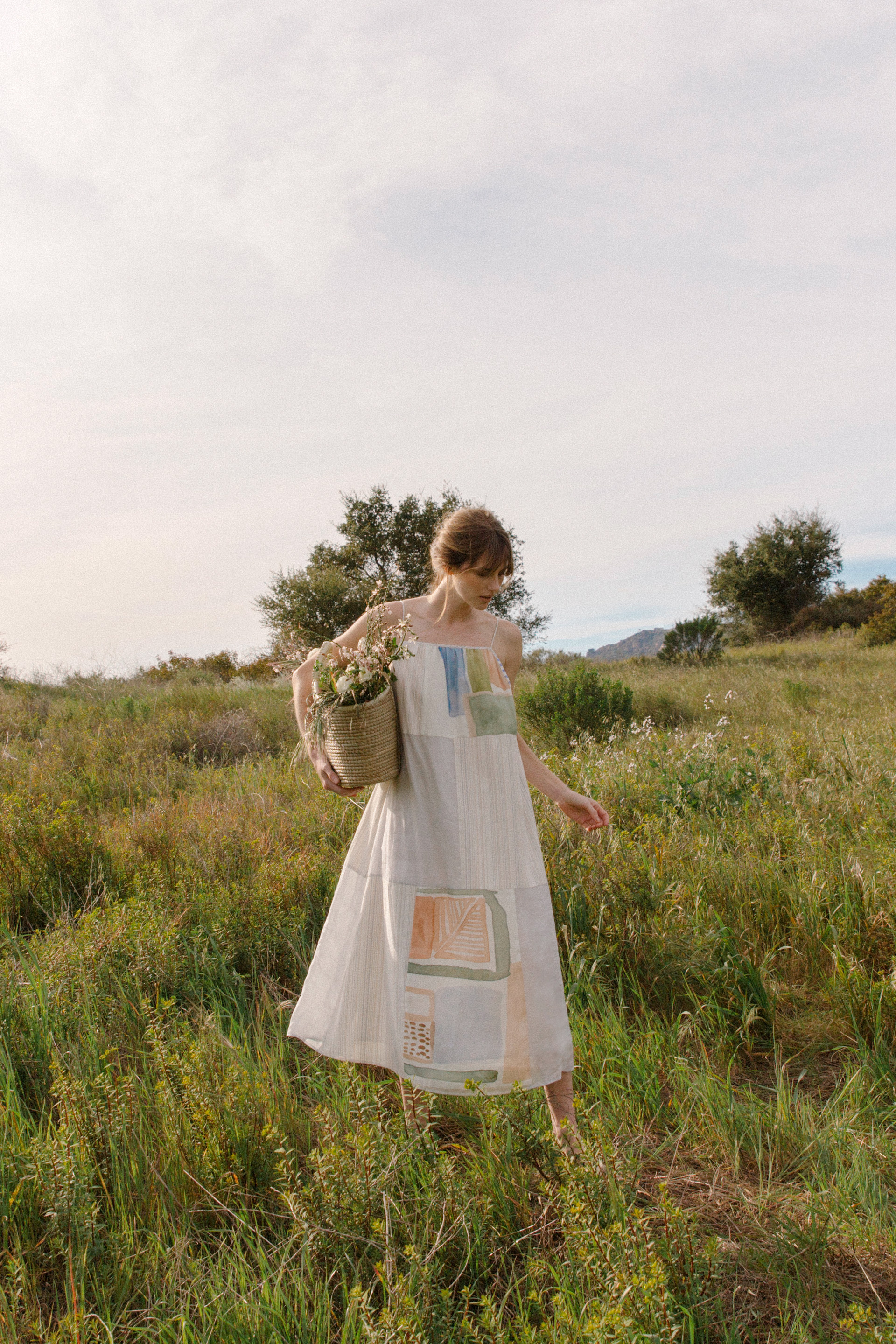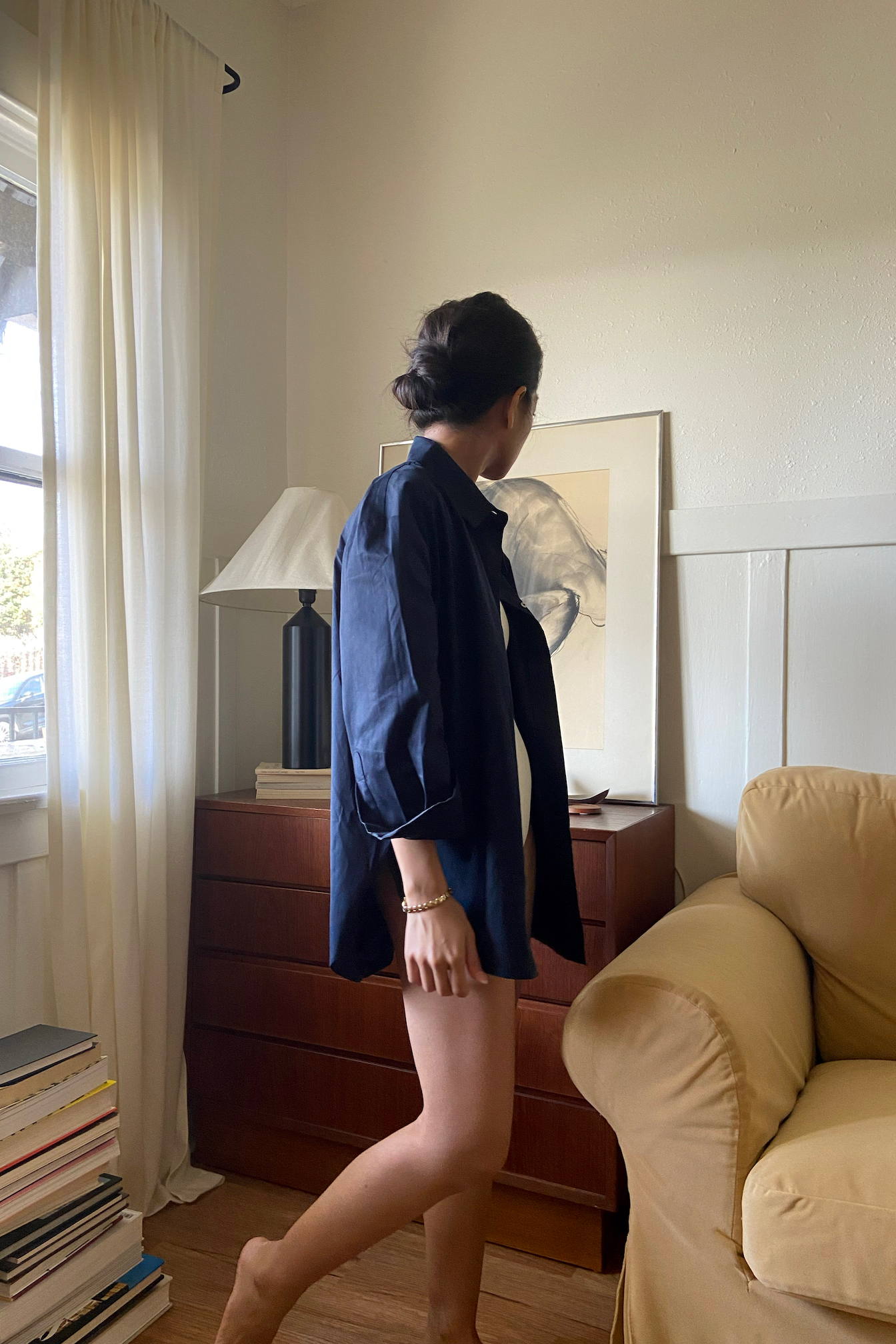We’ve been fans of Kayla Powers, following her works as a fibre artist through the years on social media. US-based Kayla grew up being surrounded by nature in her hometown of Detroit, Michigan, and it was there that she developed a passion for ecologically focused fibre art.
As a trained horticulturist and self-taught artist, preservation of traditional practices is at the heart of what she does. Her work employs the traditional practices of foraging, dyeing, weaving and quilting, using materials of the Earth – cotton, linen, wool and copper from the ground. Kayla’s natural approach to creating prints is unique, and the ideology and methodology behind her work is both exciting and admirable to us. This was how our special Spring print collaboration came to be.
After countless digital exchanges, we finally had the opportunity to meet with Kayla right here in our little red dot to uncover the deeper workings of her art and its processes — from sourcing materials at the market, understanding the methods of preparation and extraction techniques, down to the pattern dyeing of fabrics.

In the fall of 2023, we took a second off our work week for a cosy and fruitful time with Kayla, learning more about her craft and the art of natural dyeing.


Arriving bright and early at Tekka Market in Little India, we sourced locally grown plants and fruits that would later be used as key ingredients for a natural dye extraction workshop with the fibre artist.
Read on to discover and learn more about process of creating an artwork with naturally extracted dye.


The Brighter, The Better!
Kayla’s pro tip advice: opt for produce with a high level of colour fastness. This refers to the property of the dye or pigment, and its durability in maintaining the same hue — slow to fade or bleeding even after washing or exposure to light. In so doing, we can be assured of colour vibrancy during the transfer process, when we extract the dye onto a clean sheet of fabric.

Choice of Fabric
There are many types of fabrics one can choose to use as a base for the dyeing process – from cotton to silk to linen. For the workshop, we chose to work with pure cotton fabric. Cotton takes well to heat and is hydrophilic — which means its highly absorbent for organic colour transfer.

Prior to the natural dyeing process, the fabric is prepared beforehand through a stripping process called “scouring”. Scoured items dye more evenly; the dye penetrates more effectively, and dyed colours are more lightfast (resistant to fading when exposed to light) and washfast (resistant to fading or discolouration by washing).




Freshly peeled onion skin and chrysanthemum buds are some of the ingredients we procured in large quantities from the market. Bring your pot of produce to a (colourful) boil before dipping your fabric in them for best results!
We simmered our chrysanthemum buds in a large pot for 30 minutes before straining the liquid clean and submerging our prepared fabrics for another 10 minutes for the full colour to transfer.

Colourful Dyes, Prints On Textiles
After watching Kayla at work, it was time to try our hands at the creation of natural, earth-friendly colours as the artist walked us through the full process of 1) preparing fabrics for dyeing, 2) extracting dye from the produce, and 3) applying it to fibre.
Learning to use natural dyes is a lot like cooking with colour. Just like cooking, this too takes practice and care, so take it a step at a time. Attention to detail will help you to create an art piece you will be proud to call your own.



The process from here on is pretty straightforward; with your piece of fabric laid out, fold it in half and decorate as you wish with the produce you have selected! Once you’ve achieved your desired design, unfold the clean fabric and use it to cap the design neatly. Roll it tightly so that the elements stay in place.


Secure your roll with a string of twine and place it in the pot to steam for 15 minutes. Keep it taut by attaching the twine to the pot handles, ensuring it does not fully submerge into water.

Once the timer rings, remove it from the pot and shake off all the ingredients you used on your fabric. Hang your work till it’s completely dry and you’ll have your very own creation of an organically dyed art piece.
We hope you enjoyed this collaboration as much as we did – send some love over to Kayla on her socials if you do!

Kayla is wearing a first iteration of our Heirloom Gathered Tent Dress here.
About Kayla Powers
As a self-taught artist and trained horticulturist, Kayla crafts ecologically focused fibre art, intertwining the common threads of our shared humanity and exploring what it means to be present in the world today. Her work employs the traditional practices of foraging, dyeing, weaving and quilting, along with materials of the Earth – cotton, linen, wool and copper from the ground. Her work reflects the constant shift in seasons as she hand dyes fabric and yarn with plants and flowers, led by curiosity and intuition.
Kayla frequently incorporates the grid in her work, using it to map and gently weave mother nature with the urban landscape around her. She balances the grid’s structure with organic patterns and designs of plants through various printing techniques like screen printing, eco printing, bundle dyeing, and rust dyeing.
This Spring, we bring you a special collaboration with Kayla Powers, a skilled fibre artist based in the US, to produce our Spring 2024 print, Heirloom. A never before print partnership powered with an energy and intention rooted in the emotions, memories, and stories of the ones before us. Each garment was crafted and designed alongside our team to accompany you on your daily journey.



